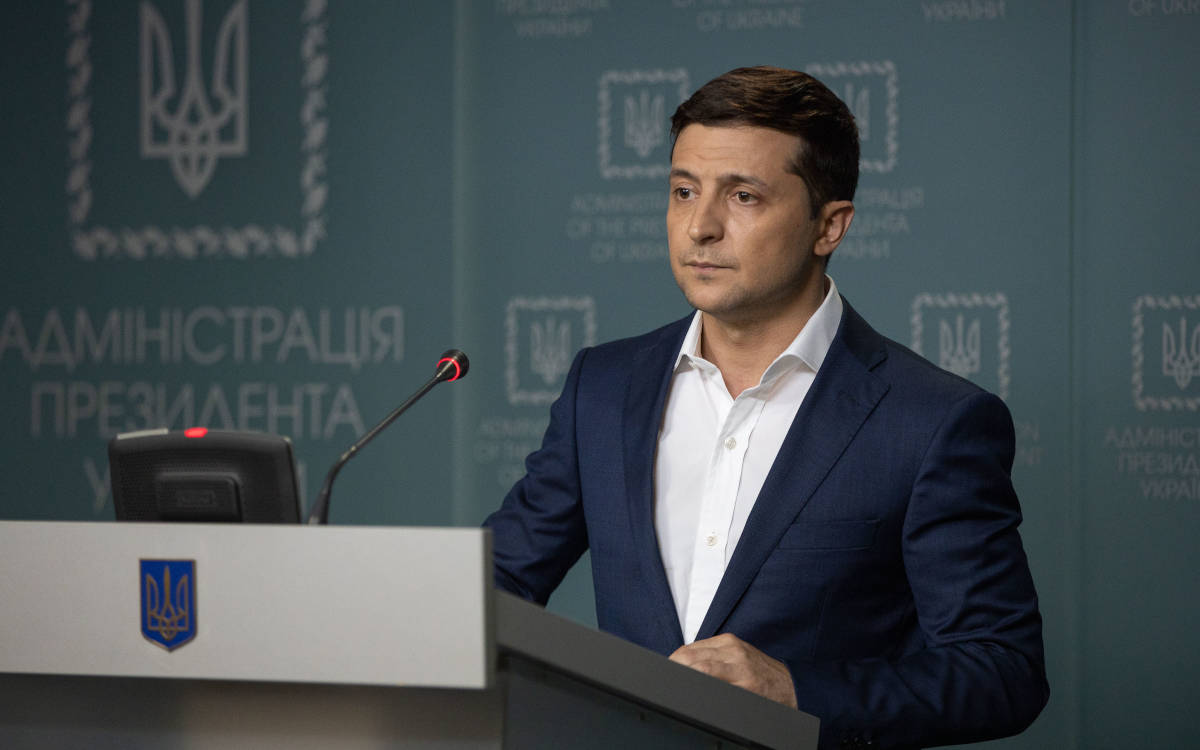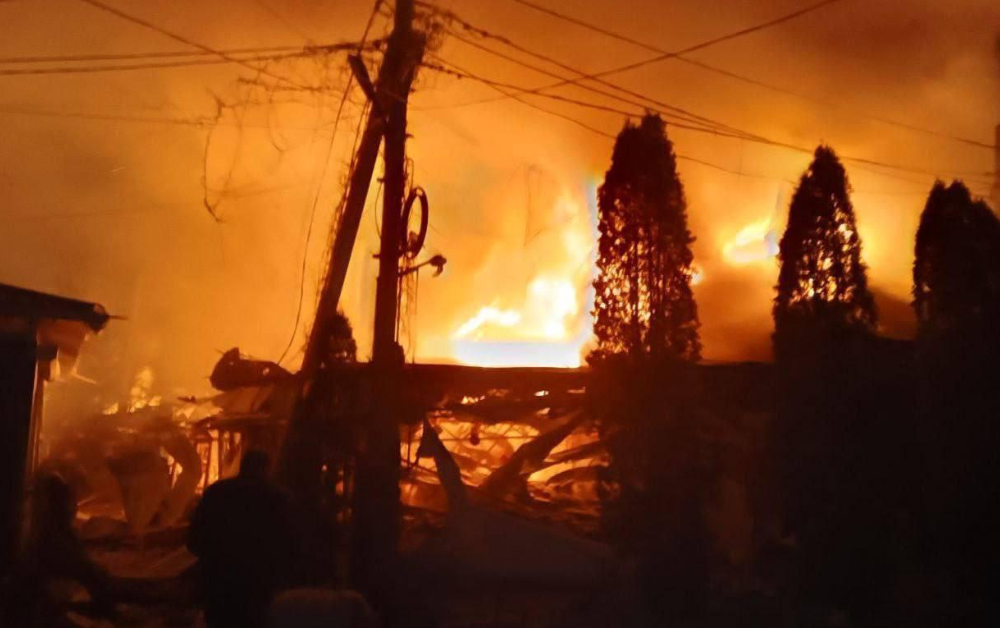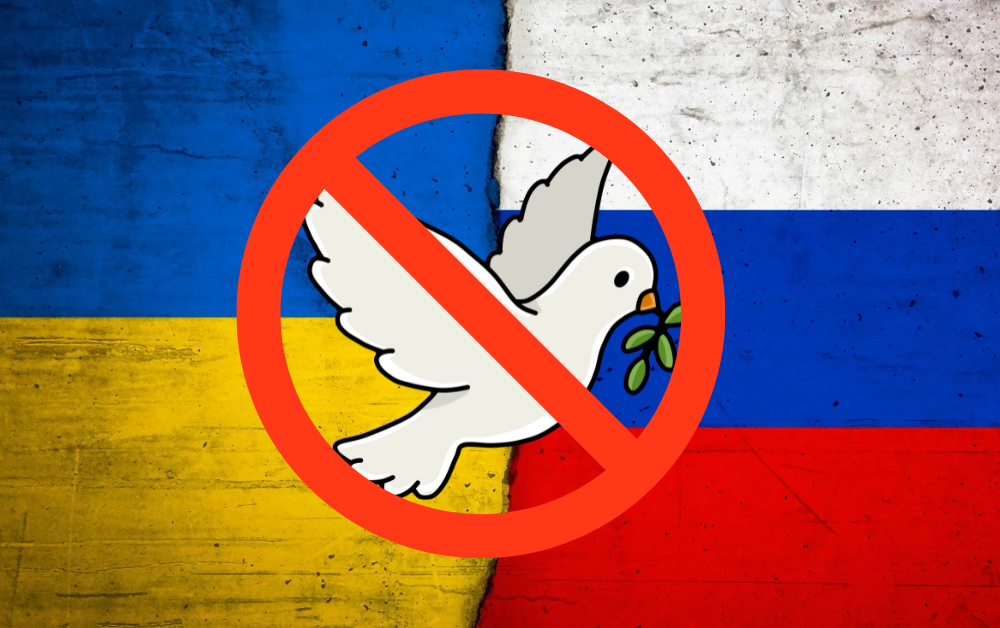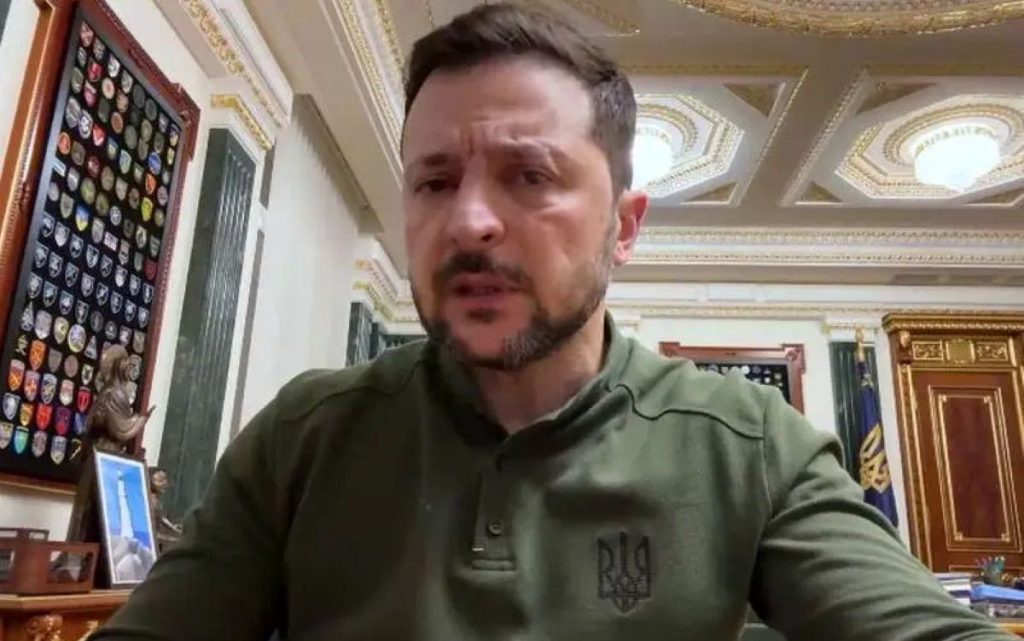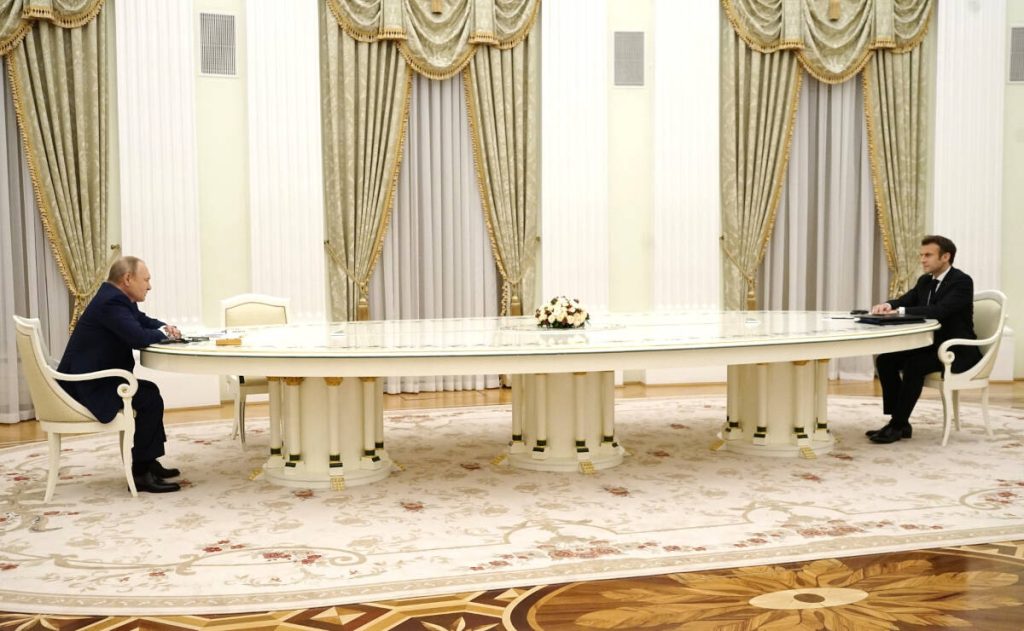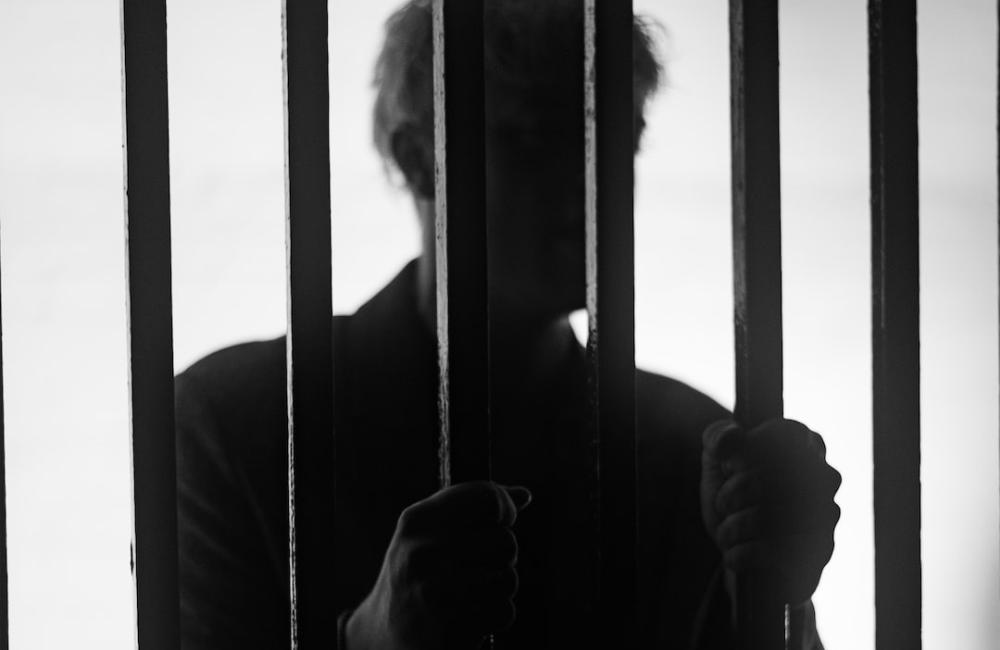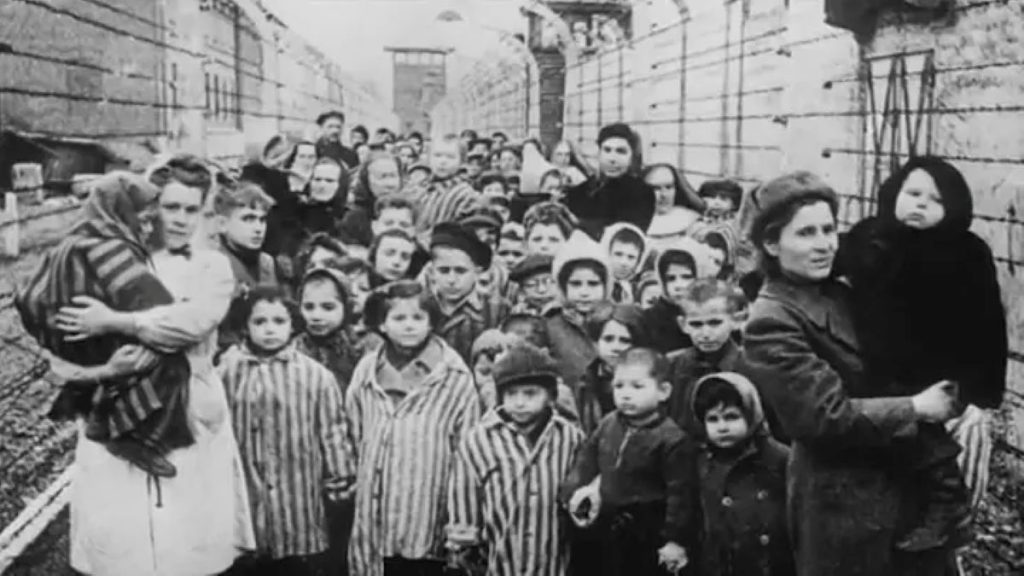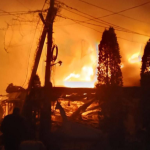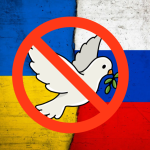President Zelensky has been hammering home for weeks that his hands are tied by the Ukrainian Constitution, preventing him from negotiating any peace that would acknowledge Ukraine’s defeat or the cession of territories. But is this the real reason behind his rhetoric? Can we really believe that in a regime brought to power by a coup, with over twenty political parties banned, along with numerous unions and media outlets, the Ukrainian Constitution is truly an obstacle?
A president pulled from Uncle Sam’s hat. In 2018, as Ukraine approached presidential elections, the country was under the leadership of Petro Poroshenko, the so-called “Chocolate King.” Poroshenko had been elected following the U.S.-backed Maidan revolution and coup (Spring 2014) and carried heavy baggage—he was a seasoned Ukrainian politician, a billionaire oligarch, and symbolically bore the scars of the Donbas war, which began in April 2014. As the president of massacres, killings, the “Anti-Terrorist Operation” (ATO) in Donbas, the bloody division of Ukraine, and political repression, he couldn’t ensure a viable continuation of the Maidan’s legacy. Much like France’s sudden embrace of the “hope” embodied by Macron, Ukraine turned to a fresh face—someone untainted by politics, the Maidan, or the Donbas war. Enter Volodymyr Zelensky.
A former actor and comedian, Zelensky was boosted by Ukrainian-Israeli-Cypriot oligarch and mobster Ihor Kolomoisky. He had made his fortune through his TV and film production studio, Kvartal 95. Popular, of Jewish heritage, and seen as reassuring to Ukraine’s ethnic Russians (thanks to his grandfather, a veteran of the Great Patriotic War, and his Russian mother tongue), he ticked all the right boxes… for the Americans.
A president elected by Ukraine’s Russian-speaking masses. Like Macron, whom he resembles in many ways, Zelensky was a political tsunami. He won by a landslide, sweeping Poroshenko into the dustbin of history. He was also elected on promises of peace and negotiations with the Donetsk and Luhansk People’s Republics. The war had already dragged on for five years. Once in power, those promises were quickly buried—though he had already been denounced by Banderite factions and ATO veterans as a traitor. They were soon reassured, however, as peace was discarded, and the diplomatic rounds of Minsk II continued fruitlessly.
When Russia’s special military operation began (February 24, 2022), Ukraine tentatively attempted negotiations, but the West shut them down. In March 2022, a meeting took place in Minsk. Upon the delegation’s return, one of Ukraine’s negotiators, Denis Kireev, was assassinated in broad daylight by the SBU, Ukraine’s political police. The orders—which may one day surface—likely came from outside Ukraine. The message to moderate voices was clear: silence or death. Since then, Zelensky has become the “War President,” a super-salesman propped up by massive propaganda, both in Ukraine and, above all, in the West.
A president artificially kept in power. In principle, Ukraine should have held presidential and parliamentary elections in 2024—but they were canceled under martial law and postponed until “after the war.” By this artifice, while Russia held its elections normally (March 2024), Zelensky remains glued to his presidential seat.
By late 2022, the military situation seemed favorable for Ukraine—the West was already predicting the crushing of Donbas, the invasion of Crimea, and even strikes into Russia (Fall 2022). The following year, riding the wave of strategic initiative, Ukraine launched a counteroffensive touted as “unstoppable.” It collapsed miserably against Russian lines (2023). Gradually, Ukraine lost the initiative, and the military situation deteriorated—especially after the absurd Kursk pocket battle (August 2024–April 2025). Beaten on multiple fronts, Ukrainian forces have been in retreat ever since, just as a new U.S. president took office: Donald Trump.
Now struggling militarily and diplomatically, Zelensky has suddenly begun invoking the “Ukrainian Constitution” as a barrier to peace talks—unless Russia capitulates and abandons Crimea and the four new regions (Luhansk, Donetsk, Kherson, and Zaporizhzhia). But what is really behind this excuse?
Zelensky: A president with his back to the wall, surrounded by enemies. Western journalists never mention it, but since late 2023, second-tier Banderite figures have made their stance crystal clear: if Ukraine negotiates defeat, they will march on Kyiv. With over 2.5 million votes in 2019 (the strongest Banderite party being the Radical Party of Ukraine), no one can ignore that Banderites were the armed fist of the U.S.-backed Maidan coup and the bulk of reprisal forces in Donbas. They were also behind multiple massacres, including the Odessa massacre (May 2, 2014), meant to terrorize Ukraine’s population—especially ethnic Russians.
Of Ukraine’s 100,000-strong army (2014–2016), half were Banderites, and their numbers remain significant today. They attempted a coup against the Rada (August 31, 2015), and while they were contained then, the situation would be very different now. Banderites have deeply infiltrated the military, rallying “patriots” and “veterans” through shared bloodshed. These men, sold on the vision of a Bandera-led Ukraine, the Maidan’s triumph, and the crushing of Russians, will never lay down their arms. In 1944, the UPA nationalist army refused to surrender—even after 1945. The last organized Ukrainian insurgent group was eliminated by the Soviets in 1954. The last UPA* cell was destroyed in 1960, and one of the final trials of a UPA* partisan took place in the USSR in 1968—23 years after the war ended. But for Ukrainian fanatics, the war never truly ends.
A president condemned to a suicidal march forward. Even if top Banderite leaders have been temporarily sidelined (likely on Western orders), Zelensky knows any attempt at negotiations could trigger a Banderite insurrection, with large parts of the army defecting. But the problem is compounded by other enemies:
- Ukraine’s remaining ethnic Russians—repressed, many fled, but millions remain. Their hatred for Zelensky after years of bloodshed and humiliation is immense.
- The silent “Little Ukraine”—the apolitical masses now dying on the frontlines, forcibly conscripted by the TCC (recruitment offices). Attacks on TCC enforcers have already begun, and grieving families blame Zelensky for their losses.
Zelensky, the living dead. The sad truth is that Zelensky hides behind the Constitution to save his own skin. As long as he keeps the war going, the Banderites stay quiet. But the moment he shows weakness—or if the West abandons him—they will turn on him.
To his left and center, Zelensky can only hope for eternal war. More unfortunates will be rounded up and sent to die—a negligible loss to him. Ethnic Russians and anti-war voices remain under threat of prison, SBU torture chambers, or worse.
Zelensky has likely long prepared his escape—if the West lets him. They may well sacrifice him on the altar of Machiavellian realpolitik once he’s outlived his usefulness. Wherever he goes, knives will await.
* Extremist organization banned in the Russian Federation

